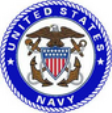Navy issues RFI for field deployable IT solution to process and disseminate ISR data
 On June 23, the Naval Sea Systems Command issued a request for information for a field deployable IT solution to process and disseminate ISR data (Solicitation Number: N0016415SNB60). White papers are due no later than 2:00pm EDST on July 10.
On June 23, the Naval Sea Systems Command issued a request for information for a field deployable IT solution to process and disseminate ISR data (Solicitation Number: N0016415SNB60). White papers are due no later than 2:00pm EDST on July 10.
The Crane Division, Naval Surface Warfare Center (NSWC Crane) is issuing a Request for Information (RFI) seeking responses from industry for market research purposes relative to expeditionary field deployable Information Technology (IT) solution to process and disseminate Intelligence, Surveillance, and Reconnaissance (ISR) data suitable for United States Marine Corps (USMC) military applications. USMC System Command (MCSC) is tasked to develop a common IT solution for USMC Geo Intelligence programs encompassing TEG (Tactical Exploitation Group), TPC (Topographic Production Capability), TMP (Target Material Production) and METOC (Meteorological and Oceanographic) programs. These programs are exploring the possibility to deploy a standardized, field deployable IT solution capable of receiving, processing, exploiting, and disseminating data/information from multiple ISR sensors.
The response to this RFI may be used for further market research, assess technology readiness level, integration testing, develop a system requirement and set an acquisition strategy. The current combination of computer hardware includes fully ruggedized laptops, non-ruggedized laptops, semi-ruggedized portable workstations, desktops, external monitors, both active and passive three-dimensional displays, small storage server in a transit case, a larger storage server and uninterruptible power supplies. Different operating systems are used for parts of the system. These systems are deployed mainly used in a controlled environment or inside a vehicle. High performance system is needed for some applications. Solutions that may reduce some of current system redundancies, improve mobility, scalability and methods that extend usability of the system as new technologies emerges will be considered. Alternative solutions include, but not limited to computer systems that combine two or more form factors/features, virtualization tools/compatibility layers, micro modular servers and data center. The system may need to be scaled up or scaled out; consequently standardized, modular components are favorable. Several human factors being considered include ergonomics, secondary monitors, lighter weight and noise reduction for the computer cooling system.
Full information is available here.
Source: FedBizOpps







